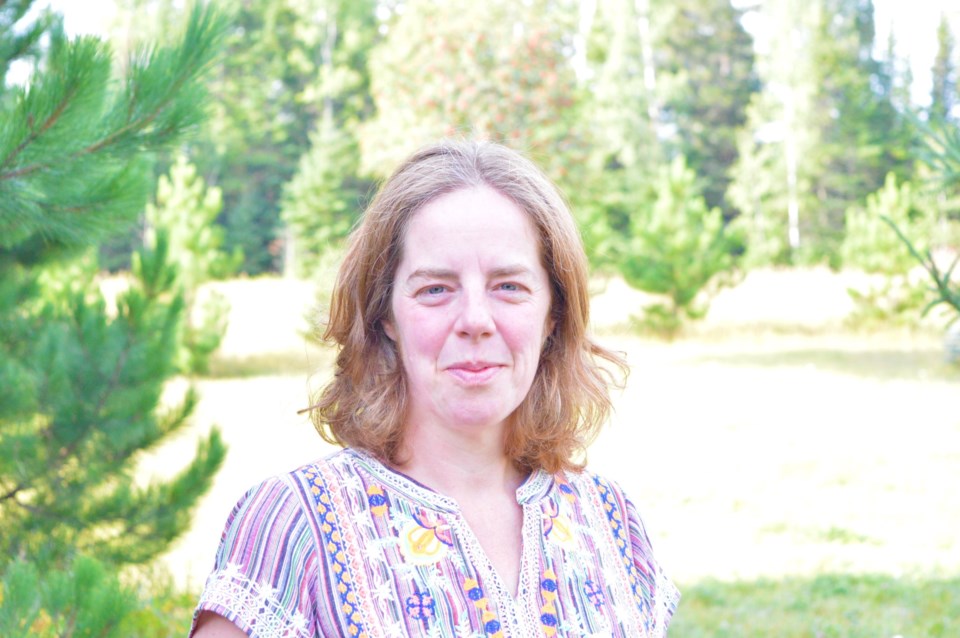THUNDER BAY – A Lakehead University professor hopes her research into homelessness in rural and remote communities during COVID-19 will shine a light on what has too often been “an invisible issue.”
Rebecca Schiff, chair of Lakehead University’s health sciences department, is helping lead a research project analyzing data from service agencies and others in rural and remote regions across Canada.
Improbably, Schiff had studied how pandemics impact those experiencing homelessness years before COVID-19 arrived, during the 2009-2010 H1N1 pandemic.
She co-edited the 2016 book Pandemic Preparedness and Homelessness: Lessons from H1N1 in Canada, which was used by the Public Health Agency of Canada (PHAC) to inform its own pandemic preparedness guidance.
Researchers found the topic had previously received little consideration, Schiff said.
“It obviously wasn’t as severe a pandemic as what we’re going through, but it had come to our attention that people experiencing homelessness are really vulnerable during pandemics,” she said.
“When public health says stay at home if you’re sick – well, if you don’t have a home, that’s a little bit difficult to do. Even basic things like washing your hands frequently – when you’re living on the streets, you don’t have access to things like washrooms in the way many of us take for granted.”
While she said H1N1 put homelessness on the radar of public health in the pandemic context, supports like shelters, already strained before the pandemic, were ill-prepared for COVID-19.
The homeless shelter system “is characterized by overcrowded sleeping conditions, poor air quality, and a range of other public health issues that are alarming in the light of high transmission rates and the need for social distancing,” read a 2020 article co-authored by Schiff and published in the Canadian Journal of Public Health.
That meant many shelters were forced to limit services at a time when they were badly needed.
“It was challenging, because organizations that were already operating over capacity all of a sudden had to cut their capacity by 50 per cent,” Schiff said.
The professor worked with other researchers and community partners to study homelessness during COVID-19, including a paper on the response to a major COVID-19 outbreak among vulnerable populations last winter.
However, she also wanted to put a spotlight specifically on the issue or rural and remote homelessness, an issue she said researchers and policy makers, like the general public, have known little about.
“You can’t see it the way you do if you’re in a city and there are people sleeping on the sidewalk,” she said. “Rural homelessness is sort of an invisible issue, and it’s much bigger than what we think it is.”
In fact, while homelessness is often presented as an urban problem, Schiff said her own research suggests it might be more prevalent in rural areas.
That’s been obscured in part due to a lack of data collection. As of 2017, only 32 per cent of service providers in rural and northern areas reported that records were kept to document local homelessness levels, according to a report she co-authored.
That’s starting to change, Schiff said, and the emerging data paints a worrying picture. Her research team found the rate of homelessness could be more than three times higher in the Rainy River District than in Canada’s major cities, for example, after analyzing data from the district’s 2018 homelessness count and other sources.
That seems to hold true for many rural areas based on their own homelessness counts, while Thunder Bay has elevated rates of its own, despite its urban character, she said.
“One of the interesting things that’s coming out of that [research] is that the percentage of people who are homeless is higher in a lot of rural places,” she said. “We find a lot of rural and northern places with homelessness rates that are three or four times higher than in Toronto, Vancouver, or Calgary.”
Schiff hopes findings like that will help spur change, not just in how we think about homelessness, but also to government funding formulas, which have traditionally favoured urban services.
Advocacy groups like the National Alliance to End Rural and Remote Homelessness (NAERRH) have already used emerging research to bring some change.
“There’s been a bit of a shift lately,” she said. “The NAERRH was able to argue for an increase to rural homelessness funding, but it’s still disproportionate – urban areas receive more funding than rural areas do [per capita].”
When governments began providing significant new supports to service agencies to respond to COVID-19 pressures, Schiff was left wondering if rural service providers were still being underfunded, on a per capita basis.
That prompted a research project examining how COVID-19 impacted rural homelessness rates, whether it impacted migration between rural and urban centres, and how rural agencies responded. Schiff earned support from the Social Sciences and Humanities Research Council of Canada (SSHIRC) for the project.
The study gathered information from organizations delivering homelessness services in rural and remote regions across Canada, defined as regions with no communities of over 50,000 people.
Many regions saw increases in homelessness (though some reported decreases), and difficulties in accommodating demand for supports.
However, the pandemic did bring a new supply of government funding, Schiff noted, in some cases allowing agencies to create new programs and services that were badly needed even before COVID-19.
Those positive outcomes were unevenly distributed, she said.
“A lot of rural places got special COVID funding to help support quarantine, PPE, staff training, or other needs,” she said, “but not everyone did, and in a lot of places it was competitive.”
What the research team learned will be shared in at least one article submitted to an academic journal and a shorter policy document that will make recommendations on government policy based on data from rural homelessness counts.
Correction: An earlier version of this story referred to Rebecca Schiff as an associate professor, rather than professor. TBNewswatch regrets the error.



